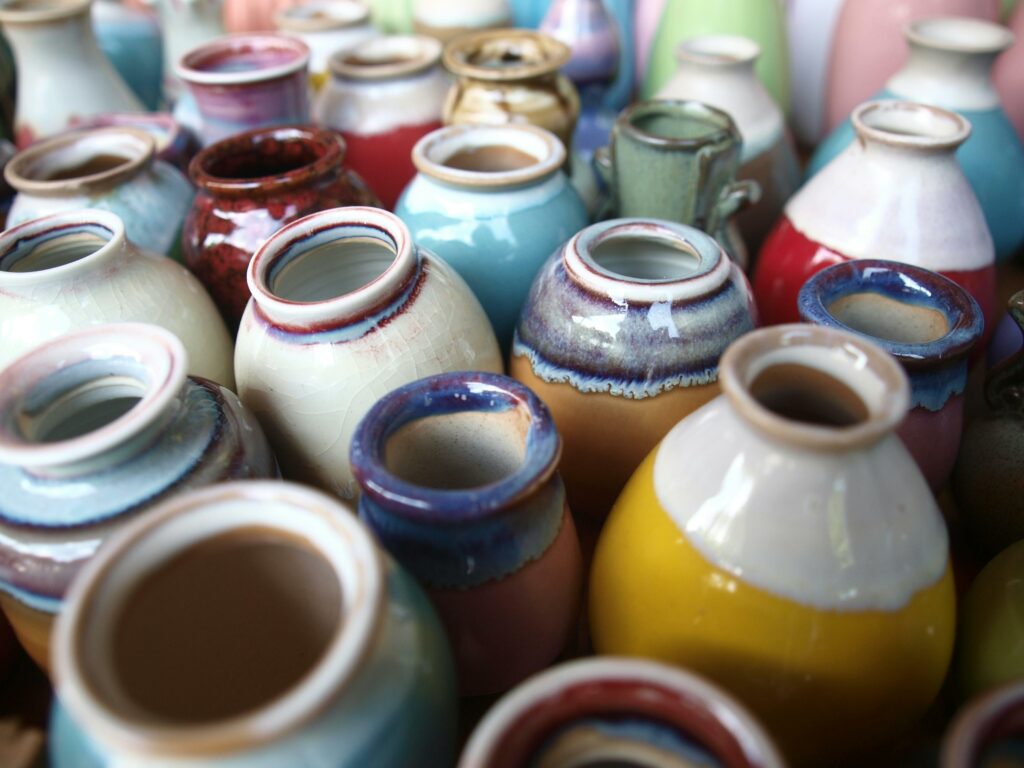A Comprehensive Guide to Making Spectrum Underglaze

In the vibrant artistic community of Nashville, exploring pottery and ceramics is a fulfilling endeavor. Whether you’re a seasoned ceramic artist or a beginner eager to delve into the world of pottery, understanding the process of making spectrum underglaze can elevate your creations to new heights. Spectrum underglazes offer a spectrum of colors and possibilities for your pottery projects, allowing you to express your creativity with finesse and depth. In this comprehensive guide, we’ll delve into the step-by-step process of making spectrum underglaze, tailored specifically for enthusiasts in Nashville.
Understanding Spectrum Underglaze
Before we dive into the recipe, let’s briefly discuss what spectrum underglaze is and its significance in pottery.
Spectrum underglazes are essentially colored slips or pigments that are applied to greenware or bisqueware before the final glaze firing. They provide a wide range of vibrant colors and can be used for detailed designs, intricate patterns, or overall coverage on ceramic pieces. Spectrum underglazes are versatile and can be applied in various ways, including brushing, dipping, spraying, or sgraffito techniques.
Ingredients and Materials
To create spectrum underglaze, you’ll need the following ingredients and materials:
- Raw Materials:
- Frit (Feldspathic)
- Kaolin
- Silica
- Various metal oxides (depending on desired color)
- Tools and Equipment:
- Digital scale
- Mixing bowls
- Ball mill or mortar and pestle
- Sieve
- Spatula or scraper
- Measuring spoons
- Safety gear (gloves, mask, goggles)
Step-by-Step Guide to Making Spectrum Underglaze
Now, let’s proceed with the detailed instructions for making spectrum underglaze:
Step 1: Weighing Raw Materials
- Set up your workspace with all necessary tools and equipment.
- Using a digital scale, measure out the required amounts of frit, kaolin, silica, and metal oxides according to your desired color recipe. Be precise in your measurements to ensure consistency in the final product.
Step 2: Mixing Dry Ingredients
- In a mixing bowl, combine the measured frit, kaolin, silica, and metal oxides.
- Use a spatula or scraper to thoroughly mix the dry ingredients until they are evenly distributed.
Step 3: Wet Mixing
- Transfer the mixed dry ingredients into a ball mill or use a mortar and pestle for smaller batches.
- Add water gradually while continuously mixing until you achieve a smooth, homogenous slurry consistency. The amount of water needed may vary, so add it slowly to avoid over-saturation.
Step 4: Grinding (Optional)
- If using a ball mill, grind the mixture for several hours to ensure thorough dispersion of particles and a finer consistency. This step helps enhance the stability and color intensity of the underglaze.
Step 5: Sieving
- Pass the mixture through a fine mesh sieve to remove any lumps or impurities. This step ensures a smooth and uniform texture in the underglaze.
Step 6: Adjusting Consistency (Optional)
- Depending on your preference, you can adjust the consistency of the underglaze by adding more water for a thinner application or additional dry ingredients for a thicker application. Mix thoroughly to incorporate any adjustments.
Step 7: Testing and Adjusting Color
- Before applying the underglaze to your ceramic pieces, conduct test firings to assess the color outcome. You can adjust the color intensity by experimenting with different ratios of metal oxides or adding additional colorants as needed.
Step 8: Storing and Application
- Store the prepared spectrum underglaze in airtight containers to prevent drying out.
- When ready to use, apply the underglaze to your pottery pieces using your preferred method (brushing, dipping, spraying, etc.).
- Allow the underglaze to dry completely before proceeding with the final glaze firing.
Safety Precautions
- Always wear appropriate safety gear, including gloves, masks, and goggles, when handling raw materials and mixing chemicals.
- Work in a well-ventilated area to minimize exposure to dust and fumes.
- Follow all safety guidelines provided by manufacturers for handling and storing chemicals.
Conclusion
With this newfound knowledge of making spectrum underglaze, you’ve unlocked the door to a world of boundless creativity and expression within the pottery scene. As you embark on your ceramic journey, armed with the ability to craft your own vibrant spectrum underglazes, remember that the process is just as fulfilling as the end result.
Embrace the opportunity to experiment with an array of colors, techniques, and applications, allowing your imagination to soar as you mold and shape your ceramic creations. Whether you’re adding intricate details to a functional mug, painting a vivid landscape onto a decorative vase, or exploring abstract patterns on a sculptural piece, each stroke of underglaze is a brushstroke of your artistic identity.
As you immerse yourself in the rich artistic community of Nashville, don’t hesitate to share your knowledge and passion with fellow potters and enthusiasts. Collaborate, learn, and grow together, fostering a culture of creativity and innovation within the local pottery scene.
Above all, cherish the process of creation—the mixing of raw materials, the application of underglaze, the anticipation of the final firing. Let each piece you create tell a story, capturing the essence of your inspiration and the beauty of handmade craftsmanship.
So, as you set forth on your pottery endeavors, may your hands be steady, your colors vibrant, and your spirit ignited with the joy of artistic expression. Here’s to a journey filled with discovery, growth, and endless possibilities in the world of spectrum underglaze pottery. Happy potting!







